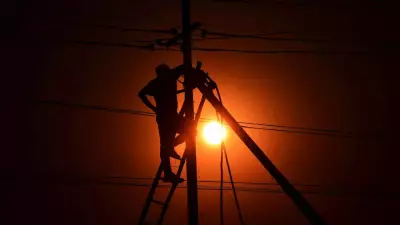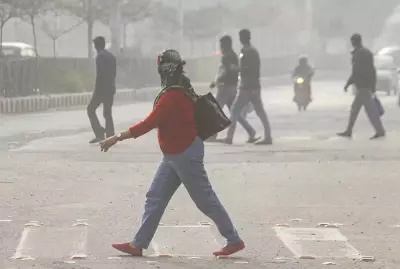
In a remarkable climatic shift, Gujarat has witnessed an unprecedented drop in temperatures during October, with maximum temperatures plunging nearly 10 degrees Celsius below normal seasonal averages. The sudden cooling has brought unexpected relief to residents across the state, particularly in urban centers like Ahmedabad.
Unseasonal Cooling Breaks Weather Patterns
According to meteorological data, several weather stations across Gujarat recorded maximum temperatures significantly lower than what is typically expected for October. The India Meteorological Department (IMD) has confirmed that this represents one of the most substantial temperature deviations recorded in recent years during this period.
Multiple Factors Behind the Temperature Plunge
Weather experts attribute this unusual cooling pattern to several converging factors:
- Extended monsoon influence with continued cloud cover and rainfall
- Western disturbances affecting regional weather systems
- Cyclonic circulations over neighboring regions altering wind patterns
- Moisture incursion from the Arabian Sea creating cooling conditions
Regional Impact Across Gujarat
The temperature drop has been particularly noticeable in Ahmedabad and surrounding areas, where residents have experienced unusually comfortable weather for this time of year. The relief from typical October heat has changed daily routines and energy consumption patterns across the state.
"This is quite unusual for October," noted a senior IMD official. "While we expect some cooling as we transition from monsoon to winter, a drop of this magnitude is exceptional and worth monitoring closely."
Agricultural and Health Implications
The extended period of moderate temperatures may have mixed effects on agriculture and public health. While the comfortable weather provides relief from heat-related stress, the delayed onset of typical seasonal patterns could affect crop cycles and water management strategies.
Health experts note that the milder conditions might reduce heat-related illnesses but caution that the changing patterns could influence seasonal disease patterns, requiring adjusted public health preparedness.
Looking Ahead: Weather Forecast
Meteorological departments continue to monitor the situation closely, analyzing whether this represents a temporary anomaly or indicates broader climatic shifts. Current models suggest gradual normalization of temperatures as the region moves deeper into the post-monsoon season, but experts emphasize the need for continued observation of these unusual patterns.





